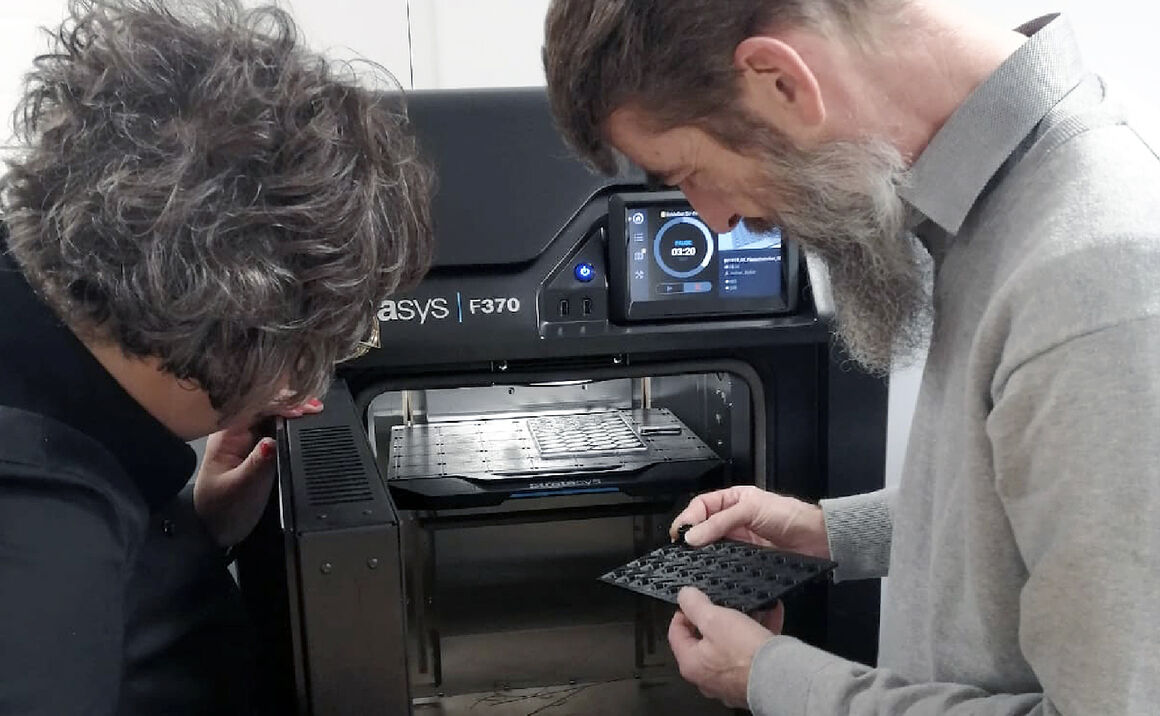The development of 3D printing is advancing by leaps and bounds. What began around half a century ago with the first idea of a 3D printer by British physicist and science-fiction author Arthur C. Clarke as a vision of the future, is now a 3D printing industry which is growing by 30 percent each year. Construction plans from the computer are becoming reality directly. The road from the digital design to the finished product has never been as short as it is today. For three-dimensional printing processes, the manufacture requires little material, labor and energy. Goods can be produced in lower quantities and according to individual needs.
3D printing really got started at the start of the 80s, driven by the need for faster and more affordable solutions to generating prototypes for series production. This is the crucial reason why Martin Schwalm has also been relying on 3D printing for a few years. The advantages are clear. “When designing a prototype, we are a lot freer than we are with conventional production technologies. The more complicated an object, the more laborious its production. You either have to drill and mill the blank, or the cast form becomes more and more expensive, the costs increase. A 3D printer offers us an interesting potential for savings.”
A new generation of 3D printers has been in use at Schwalm Robotic GmbH for a few months. We asked Martin Schwalm about the options this further-developed technology offers, and where 3D printing will continue to extend to in the coming years as well.
Editor: Mr. Schwalm, you have been using the latest generation of 3D printer for a few months now. What kind of machine is it? What can this 3D model do more of, or better, than its predecessor?
Martin Schwalm: It’s a 3D printer from the brand Stratasys, type F370. A new generation of devices which offers numerous, innovative solutions with regard to our previous 3D printer from 2012. It has the maximum material diversity and an ideal assembly space size. It can print seven different materials, including rubber.The assembly space is also considerably greater, the printing itself is much faster, more exact and finer. Functional models with complicated components are printed precisely to the tenth of a millimeter. Other advantages are the larger material magazine, meaning the spools, the material thicknesses are variable and the color is changed quickly. The technology available today has grown rapidly, and the quality is excellent.
Editor: When we talked to you about this technology for the first time over four years ago, you said that 3D printing was a supplementary technology, but not a revolution. Do you still think the same today?
Martin Schwalm: In principle, I still think the same. It continues to be a supplementary technology which has excellent potential for our area of business. Merely the ability of this new generation of printers to also process NBR (a so-called synthesized rubber) allows us to create prototypes of functional models with soft edge protection today. This wasn’t possible before. I am excited about this technology. It saves us time and money. Every day, I “feed” the 3D printers we use with CAD data, and the printers manage the additive production of prototypes overnight without supervision. The next morning, I am holding the printed result in my hands, and am pleased that I didn't have to interrupt the series production of our CNC machines to do this. It isn't that long ago that this was the normal way to produce prototypes anyway.
Editor: How do you think 3D printing will develop over the next 10 years in general, and specifically related to your field of business? What potential do you see here?
Martin Schwalm: Even if 3D printing is still a very new production technology, it is already indispensable in the industry today. The main area of application, however, for us, remains the creation of prototypes – we cannot yet foresee a complete detachment from traditional production techniques. Still, additive production is maturing very quickly, and with it, the diversity of materials.
Editor: Thank you for the interesting discussion.

